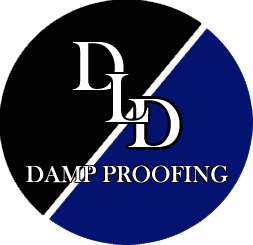Tanking Systems
Tanking Systems
Tanking systems are an important factor when trying to prevent damp, fungal decay and mold growth in your property, and are especially needed when converting a cellar or basement. Our tanking systems require the application of a waterproofing barrier to any walls or floors.
Specialised Tanking Systems
Applying tanking systems is a specialised trade and needs to be carried out by professional and knowledgeable workman who have experience within the field. Here at DLD Damp Proofing, we have been providing tanking systems for over 20 years now, and understand the importance of getting the job done right the first time round.
Prevent Damp with a Tanking System
Tanking systems are the ideal solution for basements and cellars, but should also be considered when creating extra space for storage, a family room, swimming pool or an underground car park. When it comes to tanking systems we are committed to providing the highest standards of workmanship along with unparalleled customer service.
What is tanking?
The internal walls of any property are vulnerable to water ingress and damp, especially as they age. For example, the walls of a building can become damp for many reasons: building faults, penetrating damp, plumbing issues, and rising damp.
Tanking is where an impermeable membrane or coating is applied to the inside or the outside of a structure, preventing water from entering the habitable space of the property which helps to make the basement watertight. Tanking is required when the structure sits below the ground, meaning the ground outside opens up a route for water to penetrate through walls and flooring.
What are tanking systems?
Tanking systems provide an impermeable waterproofing coating to the walls and floor, keeping your basement and cellars dry. The term ‘tanking systems’ has also come to refer to above ground damp proofing as well as cavity wall membranes as part of a basement drainage system. By completely sealing a room, a waterproof tank-like barrier is created. To address this issue, a barrier system (tanking) or water management system (waterproofing) is required.
Before selecting the most appropriate tanking system for you, it is vital that you consider the condition of the existing basement walls and floors. If a waterproof membrane is going to be added to the wall’s surface then it is essential that the existing wall is in a stable enough condition to take this treatment.
What are Type A tanking systems?
Tanking involves applying a waterproof cement or bitumen slurry coat or membrane to the basement’s walls and floor, resulting in a waterproof coat on the existing wall surface. When a waterproof slurry coat or membrane is applied directly to the structure, this waterproofing system is
known as a Type A system, creating a barrier to prevent water penetration.
What are Type B tanking systems?
Type B is where the protection against water ingress is provided by the structure, relying upon the design and materials incorporated into the structure’s external shell. Type B protection should be constructed of reinforced water-resistant concrete or structural steel.
What are Type C tanking systems?
Type C is where the protection against water ingress into usable spaces is provided by incorporating an appropriate internal water management system. Type C provides protection with a waterproofing solution that allows groundwater to penetrate through the external wall or floor as far as the cavity between the external shell and internal lining/finishes. This is collected via a Cavity Drain Membrane, diverting it into controlled drainage and a designated safe disposal point.
For more information about tanking systems or to get a free no obligation quote, please feel free to get in touch with our friendly team of experts who will be more than happy to help you out with your query
Understanding Tanking Systems: Waterproofing for Lasting Protection
Tanking systems play a crucial role in protecting properties from water ingress, particularly in below-ground structures such as basements, cellars, and retaining walls. In the UK, where older buildings are commonplace and damp conditions are not unusual, a reliable tanking system is essential for ensuring long-term structural integrity and preventing costly water damage.
What Is a Tanking System?
A tanking system is a method of waterproofing used to make a structure watertight. The term “tanking” refers to the application of a barrier—either liquid-applied or membrane-based—to walls and floors to prevent water from penetrating the surface. These systems are especially useful in subterranean environments where hydrostatic pressure from groundwater can force moisture through porous building materials.
Tanking is widely used in both residential and commercial construction, particularly in basement conversions, new build projects, and restoration work on older properties.
Types of Tanking Systems
There are several types of tanking systems available, each suitable for different scenarios:
- Cementitious Tanking: This involves the application of a cement-based slurry directly onto the walls and floors. It is one of the most common and cost-effective solutions, ideal for internal waterproofing in cellars and basements.
- Bitumen-Based Membranes: These are flexible sheets applied to the exterior or interior of the structure. Bituminous membranes are highly resistant to water and often used in conjunction with other waterproofing methods.
- Liquid Waterproofing Systems: Applied like paint, these systems cure to form a seamless waterproof barrier. They are especially useful in areas with complex geometries where traditional membranes may be difficult to install.
- Cavity Drainage Systems: Rather than preventing water ingress, these systems manage it by directing water to a controlled drainage point using membranes and channels. They are often used in conjunction with sump pumps and are particularly effective in high-water table areas.
Benefits of a Proper Tanking System
- Installing an effective tanking system offers numerous benefits:
- Prevents Damp and Mould: A sealed environment stops moisture from entering the property, reducing the risk of damp patches and mould growth, which can pose health risks.
- Protects Structural Integrity: Persistent moisture can weaken walls and foundations over time. Tanking systems act as a shield, preserving the building’s strength.
- Improves Property Value: Waterproofed basements are more usable and appealing, adding functional space and increasing resale value.
- Energy Efficiency: Dry walls and floors provide better insulation, leading to lower energy bills.
Choosing the Right Tanking System
When selecting a tanking system, it is vital to consider factors such as the type of structure, groundwater levels, and intended use of the space. A professional waterproofing specialist can assess these conditions and recommend the most suitable solution.
In the UK, where weather conditions and older buildings often make properties susceptible to damp, investing in a high-quality tanking system is a wise decision. Whether you’re renovating a basement or constructing a new building, the right waterproofing solution will protect your investment and provide peace of mind for years to come.
Our Accreditations



© Copyright 2024 - DLD Damp proofing Ltd
